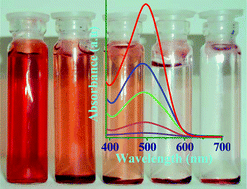Adsorption–desorption and photocatalytic properties of inorganic–organic hybrid cadmium thiosulfate compounds†
Abstract
Three inorganic–organic hybrid framework

* Corresponding authors
a
Framework Solids Laboratory, Solid State and Structural Chemistry Unit, Indian Institute of Science, Bangalore-560012, India
E-mail:
snatarajan@sscu.iisc.ernet.in
b
Department of Chemical Engineering, Indian Institute of Science, Bangalore-560012, India
E-mail:
giridhar@chemeng.iisc.ernet.in
Three inorganic–organic hybrid framework

 Please wait while we load your content...
Something went wrong. Try again?
Please wait while we load your content...
Something went wrong. Try again?
A. Kumar Paul, G. Madras and S. Natarajan, Phys. Chem. Chem. Phys., 2009, 11, 11285 DOI: 10.1039/B913407G
To request permission to reproduce material from this article, please go to the Copyright Clearance Center request page.
If you are an author contributing to an RSC publication, you do not need to request permission provided correct acknowledgement is given.
If you are the author of this article, you do not need to request permission to reproduce figures and diagrams provided correct acknowledgement is given. If you want to reproduce the whole article in a third-party publication (excluding your thesis/dissertation for which permission is not required) please go to the Copyright Clearance Center request page.
Read more about how to correctly acknowledge RSC content.
 Fetching data from CrossRef.
Fetching data from CrossRef.
This may take some time to load.
Loading related content
